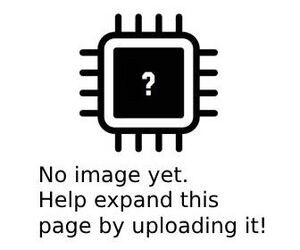This article is a stub. You can help Repair Wiki grow by expanding it
| Nintendo 3DS blue light turns on then turns off | |
|---|---|
| Device | |
| Affects part(s) | |
| Needs equipment | |
| Difficulty | |
| Type | |
Problem description
After pressing the Power button, the blue Power LED starts to fade in, but after a second or so it just turns off.
Symptoms
- The 3DS tries to turn on when pressing the Power button, but it turns itself off
- There may be an audible pop noise when the blue Power LED turns off
- When turning off, the blue Power LED either fades out gracefully, or it instantly turns off
Solution
The solution vastly depends on whether it's caused by a software problem or a hardware problem.
In basically all cases, if the Power LED fades out slowly, then it's most definitely a software-triggered problem.
However, if the Power LED turns off instantly after fading in to blue (especially if accompanied by a loud popping noise), then it's much definitely a hardware fault.
Diagnostic Steps
- Does the Power LED (blue light) go out instantly? It takes around the same time to gently fade out as it takes to fade in, so the difference is easily distinguishable.
- If the Power LED fades out gently and slowly,
Repair Steps
Check SDCard
If the system is softmodded, the presence of an SDCard with the correct files on it may be necessary for the system to boot.
If the pins of the SDCard are dirty, it may not be recognized by the system.
If an SDCard with the necessary files on it are not found, the softmodded bootloader will signal this error by gracefully shutting the system down.
- Eject the SDCard from the system
- Gently clean the pins, making sure to not scratch up the rest of the SDCard (especially if it's a microSD), and to not bend or remove the pins on it
- Re-insert the SDCard
Note: it may take a few ejects and re-inserts for the SDCard to be detected
Note: if the microSD eject mechanism is gummed up (where the 3DS has a microSD slot instead of a full-size SD slot), remove the microSD while it's clicked in, and re-insert it without moving the eject mechanism. Be aware though to not crack the microSD in half, as it may be too stubborn to get it out!
If none of this helps, the SDCard may be formatted wrong, or important boot files may be missing.
- It *must* be FAT32, and sector size should be between 512 and 32768 (32k) inclusive.
- Depending on the type of softmod, one of these files should be present and valid:
- /boot.firm (applicable if softmodded with boot9strap ("b9s") or fastboot3DS ("fb3DS"))
- /arm9loaderhax.bin (applicable if softmodded with arm9loaderhax)
Eject game cartridge
Some unlicensed game cartridges may draw excessive current, or even short the cartridge pins due to loose tolerances of the cartridge case and missing pin alignment guides.
Note: When diagnosing issues, ejecting the cartridge should always be one of the first steps, regardless whether it's licensed or not!
